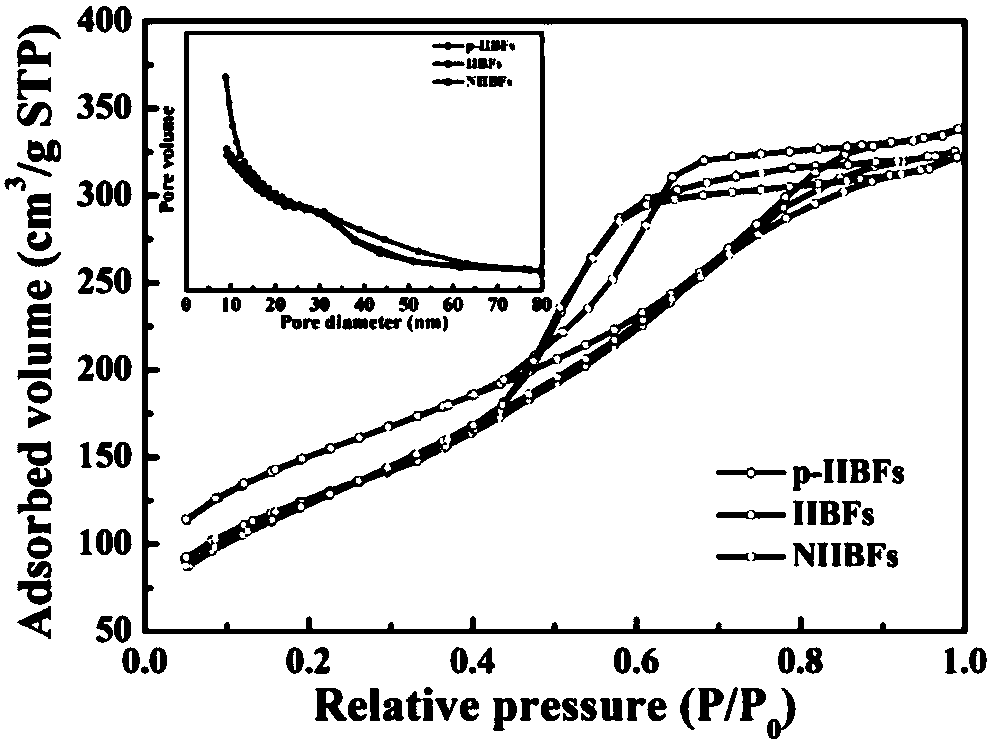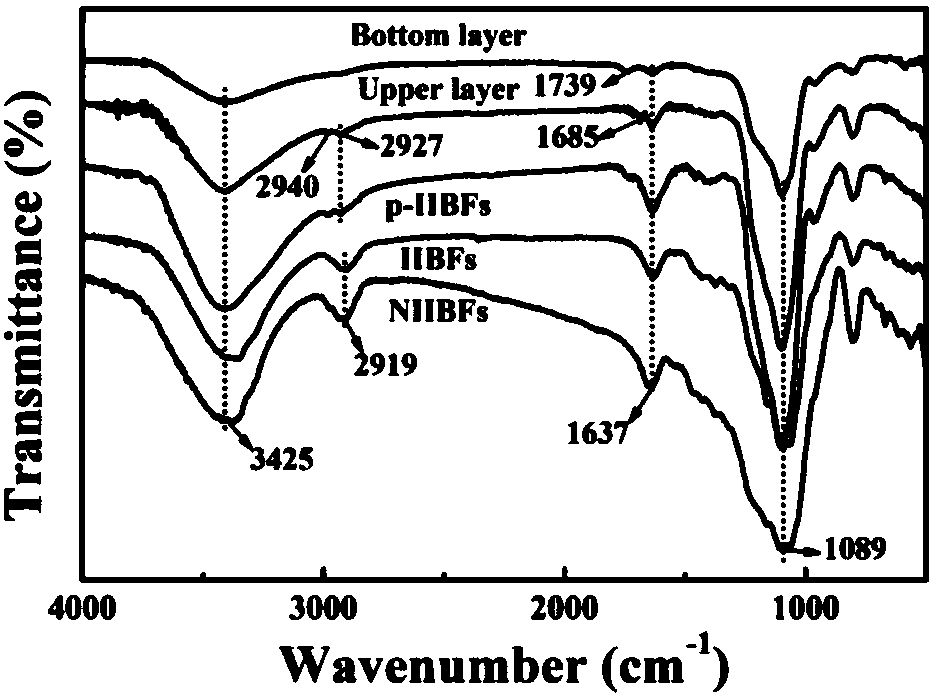Preparation method and application of double-template-directed ion-imprinted mesoporous bilayer membrane
An ion imprinting, dual-template technology, applied in the direction of chemical instruments and methods, other chemical processes, process efficiency improvement, etc., can solve the problems of unrealizable rare earth elements, low economic value, etc., and achieve high-selectivity and dual-selective adsorption. , High adsorption capacity, fast bonding effect
- Summary
- Abstract
- Description
- Claims
- Application Information
AI Technical Summary
Problems solved by technology
Method used
Image
Examples
Embodiment 1
[0027] Embodiment 1: a preparation method of a dual-template-guided ion-imprinted mesoporous bilayer membrane, which is carried out according to the following steps:
[0028] (1) Preparation of NCC (Nanocrystalline Cellulose):
[0029] Crushed medical absorbent cotton was used at 45°C for 120 minutes with 50 wt% sulfuric acid water. The cooled DDW was added to the reaction system to terminate the hydrolysis and allowed to settle overnight. The system supernatant was poured off and the remaining cloudy dispersion was collected. To remove all soluble cellulosic material, wash three times with deionized water and centrifuge. Finally, the resulting white suspension was dialyzed into a dialysis membrane (molecular weight 12000-14000) until the pH equaled 2.4.
[0030] (2) Preparation of iminodiacetic acid silane: 4.25 g of iminodiacetic acid (IDA) was dissolved in 50 mL of DDW, and the pH of the mixture was adjusted to 11.0 with 10 M NaOH. This solution was placed in an ice bat...
Embodiment 2
[0039] Example 2: A method for preparing a dual-template-guided ion-imprinted mesoporous double-layer membrane is carried out according to the following steps:
[0040] (1) Preparation of NCC (nanocrystalline cellulose):
[0041] The ground medical absorbent cotton was treated with 50 wt% sulfuric acid water for 120 minutes at 45°C. The cooled DDW was added to the reaction system to terminate the hydrolysis, and settled overnight. Pour off the system supernatant and collect the remaining cloudy dispersion. To remove all soluble cellulosic material, wash three times with deionized water and centrifuge. Finally, put the obtained white suspension into a dialysis membrane (with a molecular weight of 12000-14000) for dialysis until the pH value is equal to 2.4.
[0042] (2) Preparation of iminodiacetic acid silane: 4.25 g of iminodiacetic acid (IDA) was dissolved in 50 mL of DDW, and the pH of the mixture was adjusted to 11.0 with 10 M NaOH. This solution was placed in an ice b...
Embodiment 3
[0051] Example 3: A method for preparing a dual-template-guided ion-imprinted mesoporous double-layer membrane is carried out according to the following steps:
[0052] (1) Preparation of NCC (nanocrystalline cellulose):
[0053] The ground medical absorbent cotton was treated with 50 wt% sulfuric acid water for 120 minutes at 45°C. The cooled DDW was added to the reaction system to terminate the hydrolysis, and settled overnight. Pour off the system supernatant and collect the remaining cloudy dispersion. To remove all soluble cellulosic material, wash three times with deionized water and centrifuge. Finally, put the obtained white suspension into a dialysis membrane (with a molecular weight of 12000-14000) for dialysis until the pH value is equal to 2.4.
[0054] (2) Preparation of iminodiacetic acid silane: 4.25 g of iminodiacetic acid (IDA) was dissolved in 50 mL of DDW, and the pH of the mixture was adjusted to 11.0 with 10 M NaOH. This solution was placed in an ice b...
PUM
 Login to View More
Login to View More Abstract
Description
Claims
Application Information
 Login to View More
Login to View More - R&D
- Intellectual Property
- Life Sciences
- Materials
- Tech Scout
- Unparalleled Data Quality
- Higher Quality Content
- 60% Fewer Hallucinations
Browse by: Latest US Patents, China's latest patents, Technical Efficacy Thesaurus, Application Domain, Technology Topic, Popular Technical Reports.
© 2025 PatSnap. All rights reserved.Legal|Privacy policy|Modern Slavery Act Transparency Statement|Sitemap|About US| Contact US: help@patsnap.com



